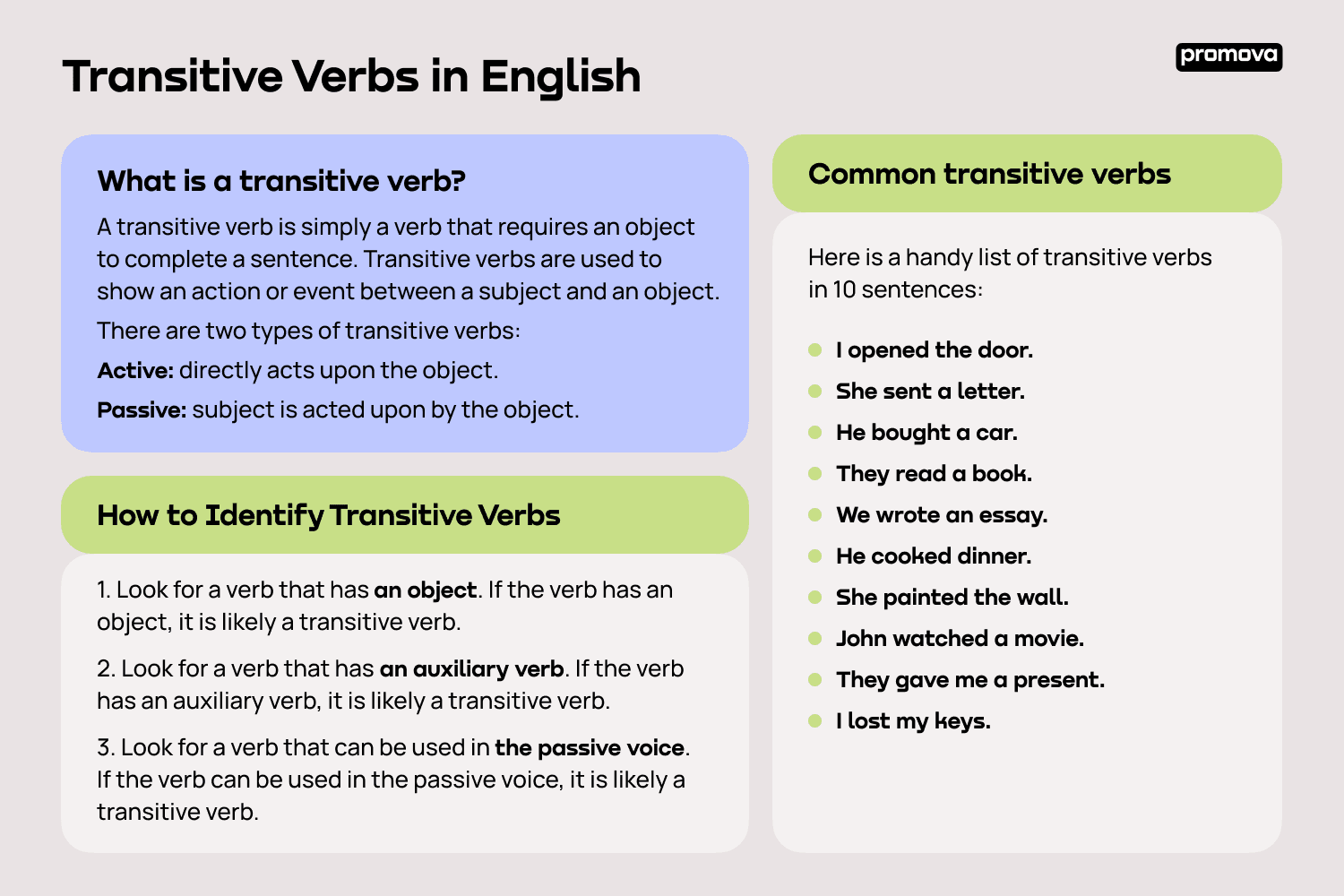Transitive Verbs in English
Contents
Transitive verbs are very important in English grammar, as they are used to convey a complete thought.
In this reference, we will discuss what transitive verbs are, their various types and how to use transitives in sentences. Let's start studying!
What is a transitive verb?
A transitive verb is simply a verb that requires an object to complete a sentence. Transitive verbs are used to show an action or event between a subject and an object. For example, in the sentence “John ate a pie”, the verb ‘ate’ is a transitive verb because it requires an object (in this case, a pie) to complete the sentence.
There are two types of transitive verbs: active and passive.
An active transitive verb is one that directly acts upon the object. For example, “John ate an apple” is an active transitive verb because the subject (John) directly acts upon the object (apple).
A passive transitive verb is one in which your subject is acted upon by the object. For example, “John was eaten by an apple” is a passive transitive verb because the subject (John) is acted upon by the object (apple).

What does transitivity mean?
Transitivity is the ability of a verb to take an object. So, transitive verbs can take an object; in other words, they are verbs that can be used to show an action or event between a subject and an object. Intransitive verbs, however, do not take an object and are used to show an action or event that does not involve an object.
Transitive verbs in English grammar
Transitive verbs are an important part of English grammar. They are used to show an action or event between a subject and an object. Transitive verbs are also used to form certain sentence structures, such as the passive voice.
In addition, transitive verbs can be used to form different tenses, such as the present perfect tense. It's formed by using the appropriate auxiliary verb (have, has, had) and the past participle of the verb (eaten, seen, given, etc.). For example, in the sentence “John has eaten an apple”, the verb ‘eaten’ is the past participle of the verb ‘eat’.
3
Examples of Transitive Verbs in sentences
Transitive verbs can be used in many different sentences. Examples of transitive verbs in sentences:
- John ate an apple.
- Mary brought a book.
- I bought a new car.
- They chose a new house.
- She offered me a job.
- He wrote a book.
How to Identify Transitive Verbs
Transitive verbs can be identified in a few different ways.
- Look for a verb that has an object. If the verb has an object, it is likely a transitive verb.
- Look for a verb that has an auxiliary verb. If the verb has an auxiliary verb, it is likely a transitive verb.
- Look for a verb that can be used in the passive voice. If the verb can be used in the passive voice, it is likely a transitive verb.
Common transitive verbs
Here is a handy list of transitive verbs in 10 sentences:
- I opened the door.
- She sent a letter.
- He bought a car.
- They read a book.
- We wrote an essay.
- He cooked dinner.
- She painted the wall.
- John watched a movie.
- They gave me a present.
- I lost my keys.
Summary
Transitive verbs are simply verbs that require an object to convey a complete thought. They're easy to use once you understand sentence structure - any verb can be transitive! Remember to experiment and learn to identify them in order to improve your English grammar.
Check out more handy references below!
Коментарі